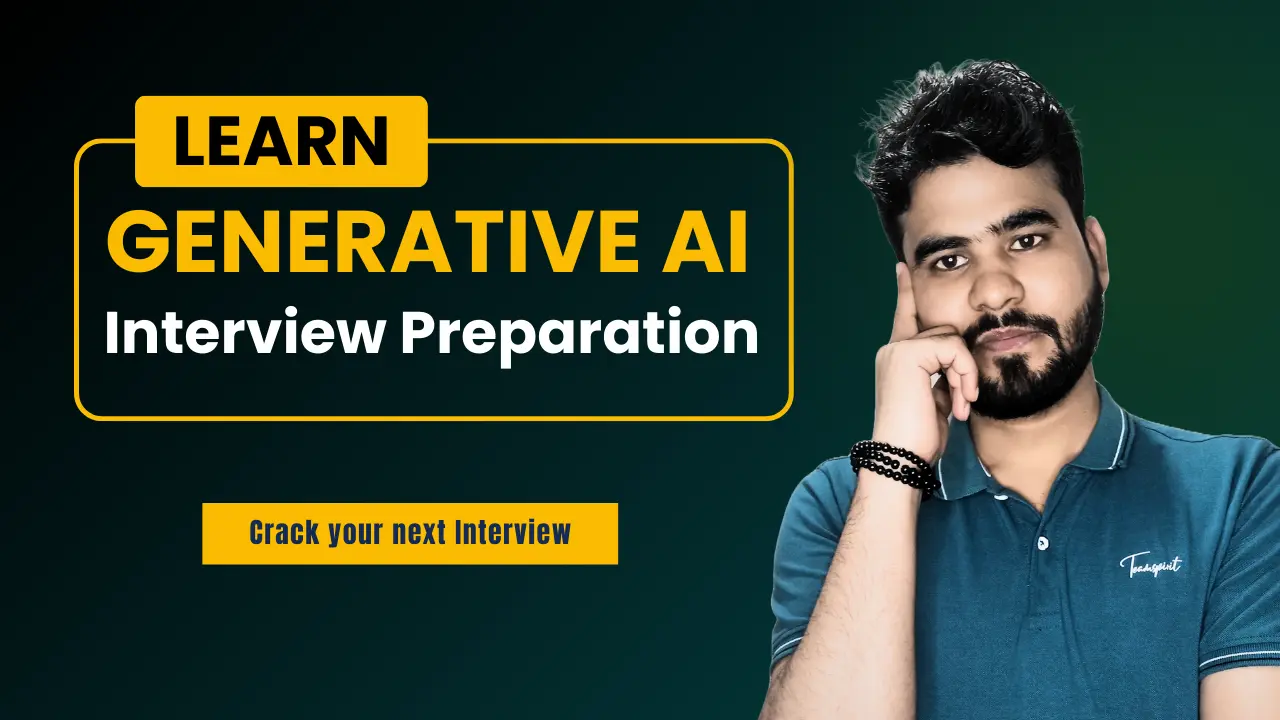If you’re learning LLM or Generative AI and planning to attend an interview, these Generative AI interview questions will be very helpful. After doing lots of research, I found some important questions that will assist you in cracking your Gen AI interview.
- What are Large Language Models (LLMs) and how do they work?
- Describe the architecture of a transformer model that is commonly used in LLMs.
- What are the main differences between LLMs and traditional statistical language models?
- How is GPT-3 different from its predecessors like GPT-2 in terms of capabilities and applications?
- Can you mention any domain-specific adaptations of LLMs?
- How do LLMs contribute to the field of sentiment analysis?
- Describe how LLMs can be used in the generation of synthetic text.
- In what ways can LLMs be utilized for language translation?
- Discuss the application of LLMs in conversation AI and chatbots.
- Explain how LLMs can improve information retrieval and document summarization.
- Describe the BERT (Bidirectional Encoder Representations from Transformers) model and its significance.
- Can you explain the concept of attention mechanisms in transformer models?
- What are positional encodings in the context of LLMs?
- Discuss the significance of pre-training and fine-tuning in the context of LLMs.
- How do LLMs handle context and long-term dependencies in text?
- What is the role of transformers in achieving parallelization in LLMs?
- What are some prominent applications of LLMs today?
- Explain the core idea behind the T5 (Text-to-Text Transfer Transformer) model.
- What is the RoBERTa model and how does it differ from standard BERT?
- Discuss the technique of ‘masking’ in transformer models like BERT.
- How does the GPT (Generative Pre-trained Transformer) series of models work?
- What are some of the limitations of the Transformer architecture in LLMs?
- How do hyperparameters affect the performance of LLMs?
- Discuss the role of learning rate schedules in training LLMs.
- What is the importance of batch size and sequence length in LLM training?
- Explain the concept of gradient checkpointing in the context of training efficiency.
- How can one use knowledge distillation in the context of LLMs?
- Discuss techniques for reducing the memory footprint of LLMs during training.
- What preprocessing steps are crucial when dealing with input data for LLMs?
- How is tokenization performed in the context of LLMs, and why is it important?
- Discuss the process of vocabulary creation and management in LLMs.
- What considerations should be taken into account for handling different languages in LLMs?
- How do you address the challenge of overfitting in LLMs?
- Discuss strategies for efficient deployment of LLMs in production environments.
- Can you describe techniques to monitor and maintain LLMs in production?
- Explain the factors to consider when selecting hardware for training LLMs.
- Discuss the role of multi-GPU and distributed training in LLMs.
- Write a Python function using PyTorch or TensorFlow to tokenize input text for GPT-2.
- Implement a simple transformer block using PyTorch or TensorFlow.
- How do you evaluate the performance of LLMs?
- Discuss the challenges of evaluating LLMs in a real-world context.
- How can LLMs be fine-tuned for specific tasks?
- Explain the concept of transfer learning in the context of LLMs.
- What is the role of embeddings in LLMs?
- Discuss how LLMs handle out-of-vocabulary (OOV) words.
- How do LLMs address the issue of bias in generated text?
- What are some common pitfalls in training LLMs?
- Explain the importance of ethical considerations in the deployment of LLMs.
- How do you handle the privacy concerns associated with LLMs?
- Describe the significance of model interpretability in LLMs.
- What are Zero-shot and few-shot learning capabilities in LLM?
- Discuss the implications of attention flow in multi-head attention mechanisms.
- What are the potential future applications of LLMs that are currently being researched?
- How can reinforcement learning be applied to further training or fine-tuned LLMs?
- Discus Generative Adversarial networks ( GAN ) in the context of text generation with LLMs.
- Describe a method for efficiently rollback to the previous LLM model state in case of failures.
- Explain model versioning strategies when updating LLMs in production.
- How would you conduct A/B testing for a new version of an LLM-based application?
- What metrics would you use to evaluate the performance of a fine-tuned LLM?
- Propose a framework to use LLMs in creating personalized content recommendations.
- How would you set up a LLM to create a news article summarizer?
- What approach would you take to build a chatbot using LLM?
- Design a system using LLMs to generate code snippets from natural language descriptions.
- Discus techniques to adapt a LLM for a legal document review application.
- Modify a pre-trained BERT model for a classification task using transfer learning.
- Implement a beam search algorithm for better text generation models.
- Develop a custom loss function for a transformer model that accounts for both forward and backward prediction.
- Fine-tuned a GPT-2 model for a specific task style or author using PyTorch or tensorflow.
- Code a routine to perform abstractive text summarization using a pre-trained T5 model.
- Hallucination in LLMs is a known issue, how can you evaluate and mitigate it?
- What evaluation metrics can be used to judge LLM generation quality?
- When generating sequences with LLMs, how can you handle long context lengths efficiently? Discuss techniques for managing long inputs during real-time inference.
- Large Language Models often require careful tuning of learning rates. How do you adapt learning rates during training to ensure stable convergence and efficient learning for LLMs?
- Explain the concept of triplet loss in the context of embedding learning.
- What is quantization in the context of embeddings, and how does it contribute to reducing the memory footprint of models while preserving representation quality?
I hope this blog helps you to crack your upcoming GEN AI Interview. Feel free to ask your valuable questions in the comments section below.









